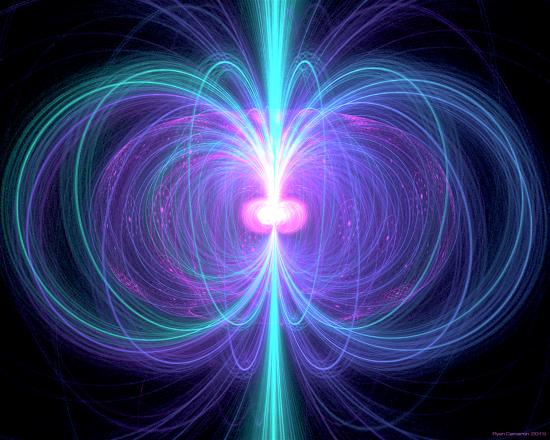
The Milky Way’s plasma torus. Image by Ryan Cameron.
Feb 16, 2018
A ring of galactic plasma.
There is a twisted ring of material surrounding the nucleus of Galaxy Centaurus A; an “active galaxy” that exhibits axial jets and a doughnut-shaped plasma discharge. Active galaxies are brighter than other galaxies of the same type, since they radiate excess energy from a compact galactic nucleus.
As a previous Picture of the Day discussed, there is a twisted toroid of plasmas orbiting the Milky Way’s core, as well. Some astronomers suggest that it is a “standing wave” in the central bulge. In their eyes, spin and inertia are the only two forces at work, so combining them is said to cause an unusual oscillation in the gases and dust held there by gravity.
In consensus circles, galaxies are thought to rotate because a hypothetical cloud of gas and dust contracts, spinning faster as it increases in density. A disk of material surrounds the central nucleus, and gravitational eddy-currents inside the disk condense into stars. Internal gravity is overcome by centrifugal force that throws out material like paint on a rotating disk. How a cloud of particles acquires a net spin is unexplained by consensus astronomers, however.
Hannes Alfvén’s electric galaxy theory shows that galaxies are like homopolar motor/generators driven by magnetic fields. As a metal plate rotates between the poles of an electromagnet, it spins at a rate proportional to the input current. In an Electric Universe, galaxies are created when a “Bennett pinch” inside cosmic “transmission lines” ionize plasmas within electromagnetic fields, igniting stars and forming toroidal currents around galactic equators.
Since galaxies are part of a filamentary circuit that flows through the cosmos, they most likely spin because of electricity flowing through them. Galaxies exist within a filamentary circuit of electricity. There is no way to know where this charge flow rises, or to what electrode it is attracted, but we see the effects of its electromagnetic fields in the magnetism and synchrotron radiation that permeate space.
Rather than a gravitational impetus from cold gas, it is electromagnetic plasma that is spinning the Milky Way’s center, forming the ring. Gamma-ray observations of the core reveal that high frequency radiation from the plasmoid is similar to that from electrically excited stars, because an electromagnetic field in the plasmoid accelerates particles to high speed. So, it is the Milky Way’s plasmoid that generates a glow from the galactic core.
Stephen Smith












